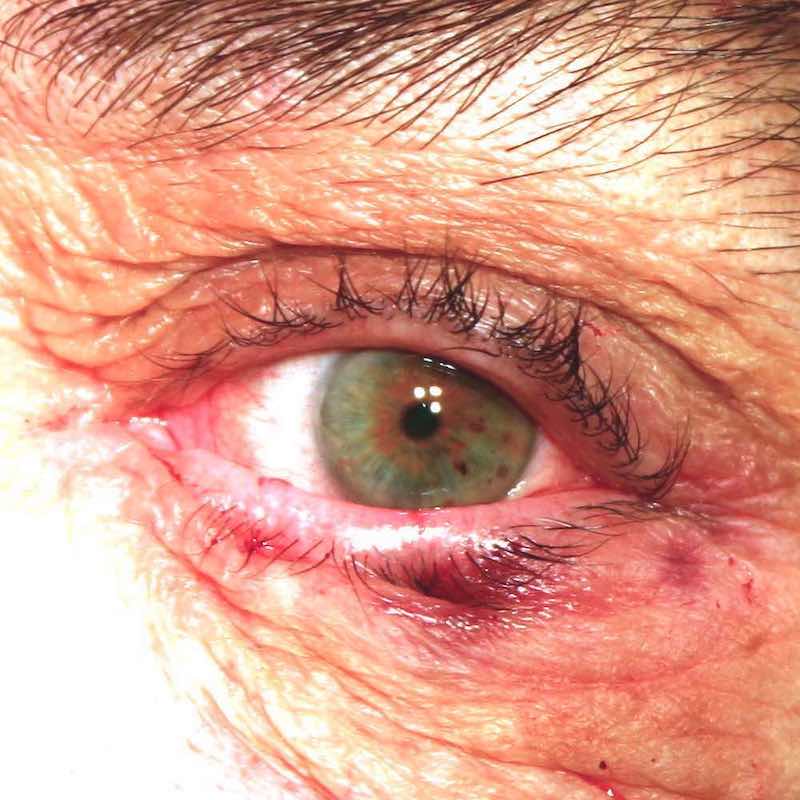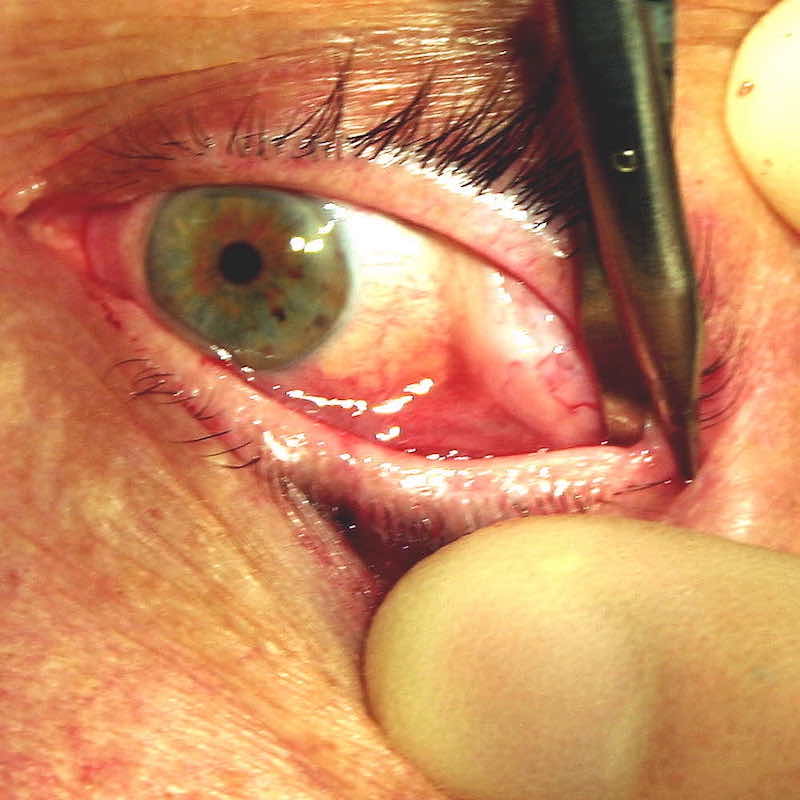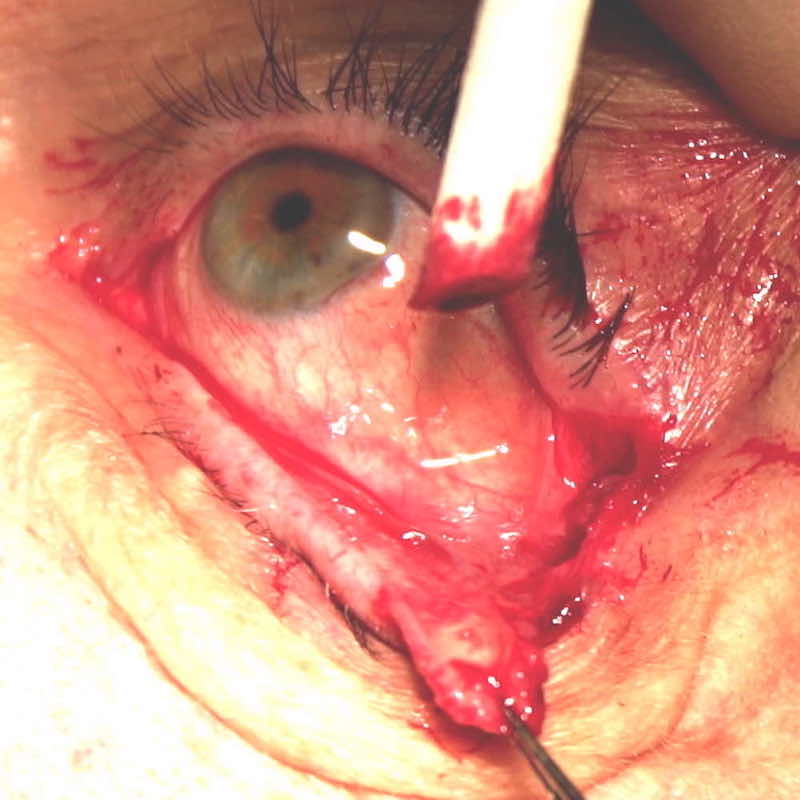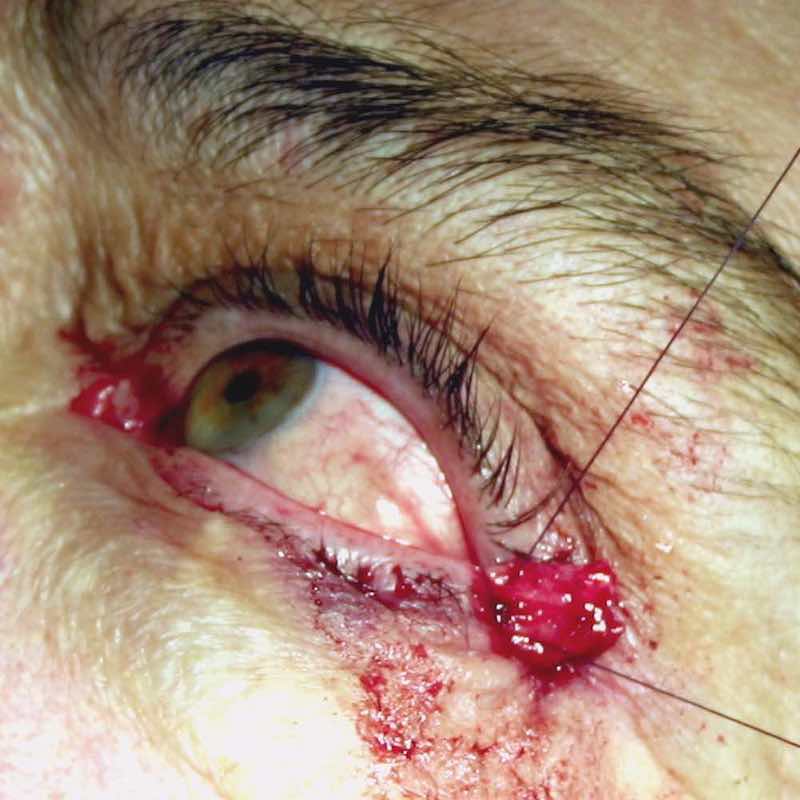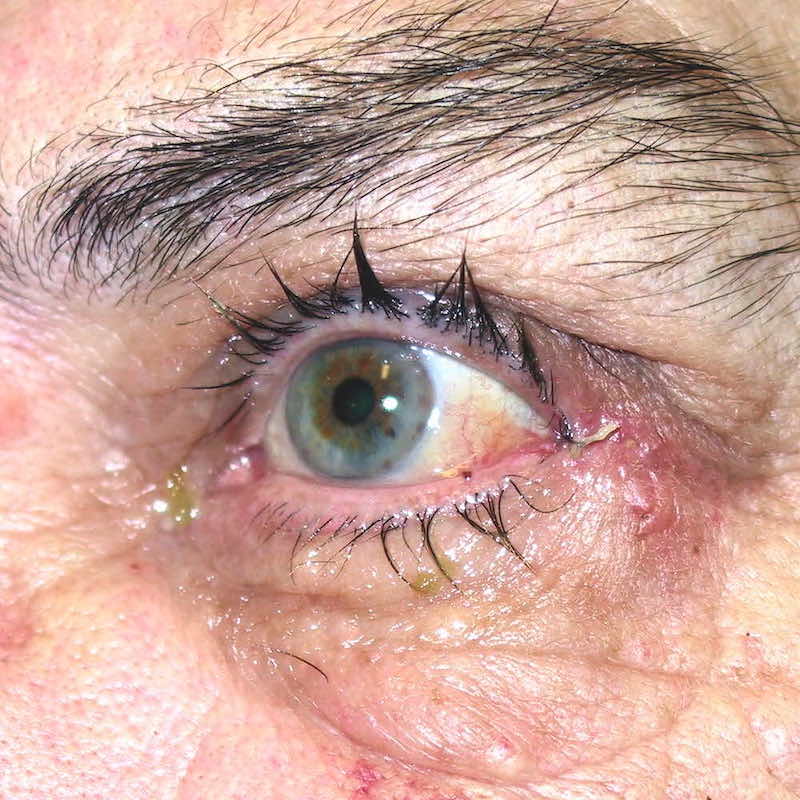Entropion
Inturning eyelids / Eyelids that turn in / Eyelashes rubbing against the eye | Eyelids Turning Inwards
What is an Entropion?
The term entropion refers to when the edge of the eyelid rotates inwards towards the eyeball, often causing the eyelashes to rub against the eyeball
What causes an entropion?
In the UK, the commonest cause of entropion is due to ageing. Age related weakening of the various tendons, which normally stabilise the eyelid and keep the normal blinking action in check, allow the eyelid to rotate inwards resulting in entropion formation. Some conditions which cause scarring of the back surface of the eyelids and/ or weakening of the muscles of the eyelid can also lead to the eyelid turning inwards.
What are the signs and symptoms of an entropion?
The eyelid rubs against the eye causing irritation, redness, watering and blurred vision. Very rarely, if left untreated, the constant rubbing of the cornea may lead a sight threatening infection and ulceration of the cornea.
What causes an entropion?
In the UK, the commonest cause of entropion is due to ageing. Age related weakening of the various tendons, which normally stabilise the eyelid and keep the normal blinking action in check, allow the eyelid to rotate inwards resulting in entropion formation. Some conditions which cause scarring of the back surface of the eyelids and/ or weakening of the muscles of the eyelid can also lead to the eyelid turning inwards.
What are the signs and symptoms of an entropion?
The eyelid rubs against the eye causing irritation, redness, watering and blurred vision. Very rarely, if left untreated, the constant rubbing of the cornea may lead a sight threatening infection and ulceration of the cornea.
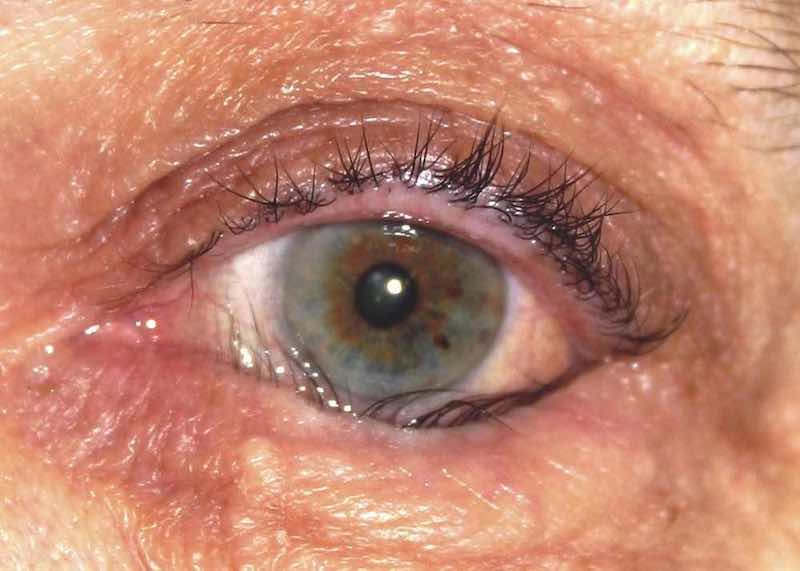
Lower Lid Entropion: The entire eyelid has started to turn inwards causing the eyelashes to touch the eyeball causing irritation
Do all Entropions need treatment?
No. Not all entropions need treatment. Indeed many patients opt to leave their entropions alone and decline the option of surgery.
However common reasons for ectropion treatment include:
However common reasons for ectropion treatment include:
- default_titleCosmetic reasons: Less commonly some patients choose to have entropion surgery purely because they do not like the appearance of their eyelid turning inwards.
- default_titleFunctional reasons: Most patients decide that they want to have entropion treatment because of the discomfort and watering associated with one's eyelashes rubbing against their eyeball surface.
- default_titlePreventative safety: Some patients need have entropion surgery to make their eye safe for other operations e.g cataract surgery, glaucoma surgery. The eyelashes normally teem with various organisms such as bacteria. It is therefore important that the eyelashes are kept away from any surgical wounds for fear of entry of bacteria into the globe itself. Any intraocular surgery such as cataract surgery has a much higher risk of catastrophic sight threatening internal eye infection (bacterial endophthalmitis) if the eyelashes rub against the ocular surface either during surgery or shortly after that operation. It is therefore vital to consider entropion treatment first to all that intraocular surgery to be conducted as safely as possible.
- Show More
Treatment for Entropion
Temporary Treatment
Taping: The lower eyelid can be pulled back into its normal position with a piece of tape placed between the eyelid and cheek. This is only a temporary measure for entropion of the lower eyelid, while awaiting surgery.
Botulinum Toxin Injections: Sometimes an injection of botulinum toxin (Botox) may be used to help weaken the muscles on the front of the eyelid thus preventing the eyelid from turning inwards. This is similarly a temporary procedure and provides comfort whilst waiting for definitive surgery.
Long Term Treatment
Surgery
The best option for treating entropion is by an operation. This usually involves correcting any laxity of the eyelid tendons to restore the eyelid back to its normal position. This operation is commonly performed quite comfortably as a day case procedure under local anaesthetic (using numbing injections). Most entropion operations take less than 20 minutes to perform as a day case procedure. The sutures used are typically self dissolving. Following surgery the patient may need to take some antibiotic tablets or apply an antibiotic ointment to the wound, wear an eye shield at night time and just be a bit more careful when washing around the recovering eyelid for about 10 days following surgery.
Taping: The lower eyelid can be pulled back into its normal position with a piece of tape placed between the eyelid and cheek. This is only a temporary measure for entropion of the lower eyelid, while awaiting surgery.
Botulinum Toxin Injections: Sometimes an injection of botulinum toxin (Botox) may be used to help weaken the muscles on the front of the eyelid thus preventing the eyelid from turning inwards. This is similarly a temporary procedure and provides comfort whilst waiting for definitive surgery.
Long Term Treatment
Surgery
The best option for treating entropion is by an operation. This usually involves correcting any laxity of the eyelid tendons to restore the eyelid back to its normal position. This operation is commonly performed quite comfortably as a day case procedure under local anaesthetic (using numbing injections). Most entropion operations take less than 20 minutes to perform as a day case procedure. The sutures used are typically self dissolving. Following surgery the patient may need to take some antibiotic tablets or apply an antibiotic ointment to the wound, wear an eye shield at night time and just be a bit more careful when washing around the recovering eyelid for about 10 days following surgery.
-
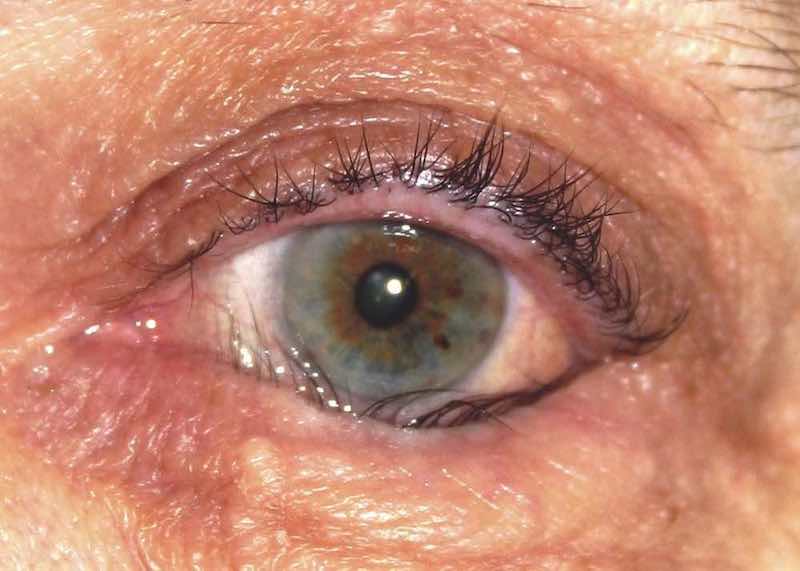
Pre Surgery- Click arrows to advance gallery.
-
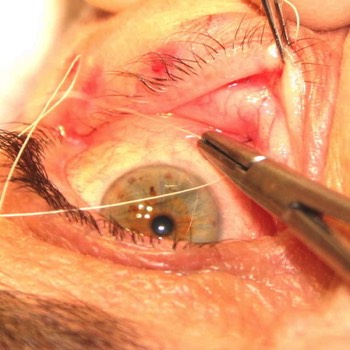
Sutures are inserted to tighten up the lower eyelid
-
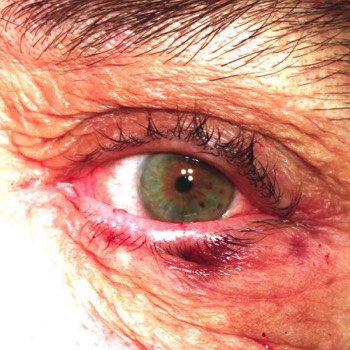
These sutures dissolve by themselves eventually
-
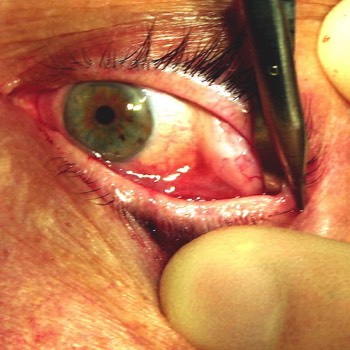
The lateral canthal tendon is detached off
-
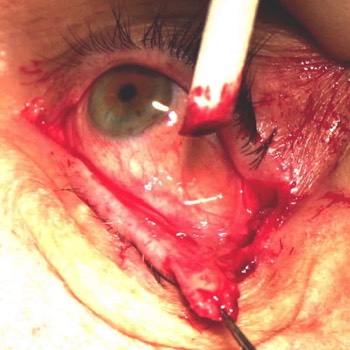
The lateral canthal tendon is shortened to tighten it.
-
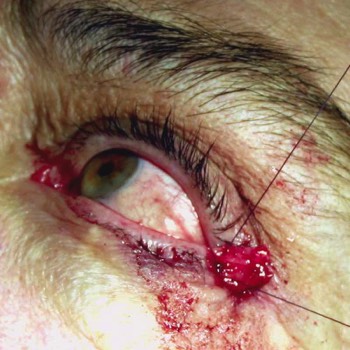
This lateral canthal tendon is tightened up with sutures.
-
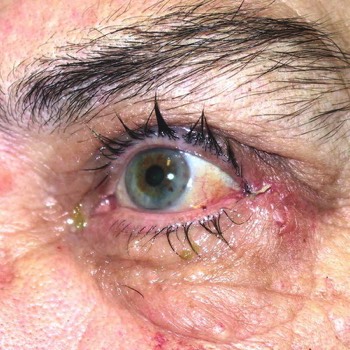
1 week following surgery
Entropion Correction Surgery Gallery: Click image to run gallery. Warning: Some may find the images of surgery distressing

Dear Sir, thank you very much indeed for the surgery you performed on me, although it was it was recommend to improve comfort it has, how can I put it, benefitted my vision…I believe that the the eyelashes were scratching the lens so following the surgery when this scratching ceased the lens allowed what sight I still have to work better. Before the operation to my right lower lid, I was down to just the left eye for clarity and that is without significant peripheral vision; the right eye was just shapes and colour- in many circumstances the right eye was detracting from the vision in the left eye and often I found it better to cover my right eye. Since the operation I can see again in my right eye. At 60 years old, my GP had told me that I would eventually go blind. Last week though my wife and I went to the photography show at the NEC and I bought a new digital camera. With the wonders of this new technology I can see the results on my new television. For the first time in a long time, I felt confident enough in the future and with my vision to buy this new camera. For the first time in a long time I have felt optimistic enough to buy something like this. Thank you so much. At the age of 87, I am living for the now and the near future, not morosely managing decline. The world is full of people who complain but few notice the good things such as your exceptional service provided…
Mr GR. Surgery performed: Right lower lid entropion correction at the Russells Hall Hospital, Dudley

